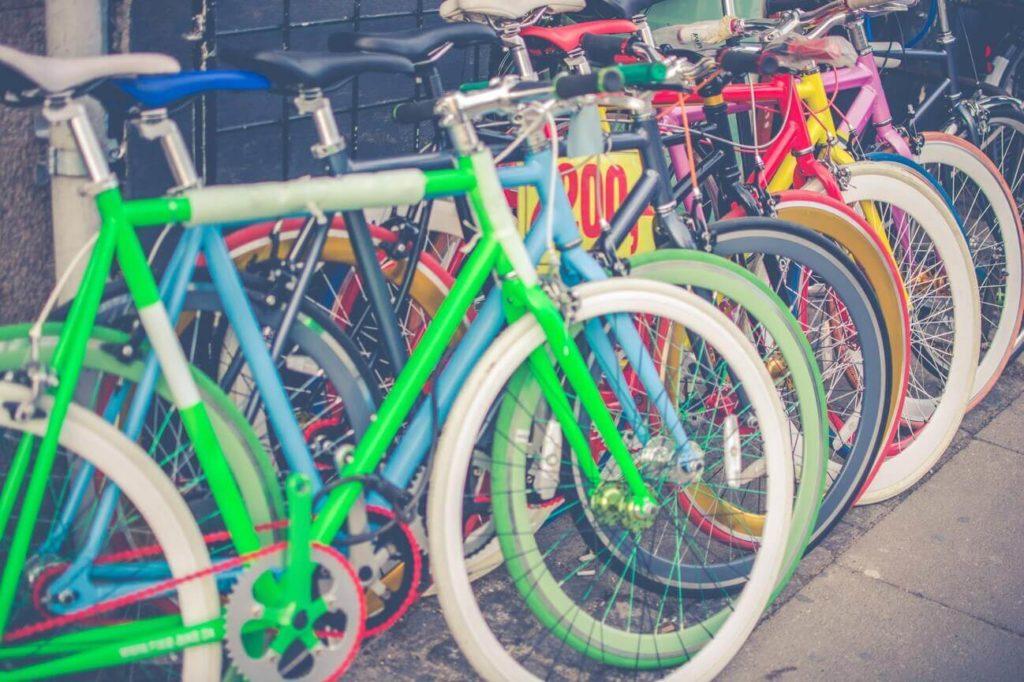When it comes to cycling, the Dutch are kilometres ahead of the rest of us, quite literally. The average Dutch person cycles around 1,000 km annually, and in 2017, there were 22.5 million bicycles in the Netherlands – more than the 17.1 million people who live there.
A country with most cyclists, but the safest. How did their cycling infrastructure get so good? And what can we learn from them?
Most of us, including some dutch people, believe that all the incredible cycling infrastructure, including vast interconnected cycle paths, have always been there. But while cycle paths in the country’s cities had existed pre-WW2, they were much narrower, unlevel and disconnected.
There also wasn’t such a concern for separate cycle paths because there weren’t so many cars.
Their current infrastructure and policies came about through a series of changes that took place post-WW2 and came to a head in the 1970s.
After WW2 the Netherland got richer – which changed their roads
While before the war, bicycles far outnumbered their motorised, four-wheeled, counterparts, that changed in the late 40s and 50s. Car purchases went through the roof as the average wage continued to increase.
With this growth of cars on city streets that weren’t built to cope with it all brought about change. Buildings were knocked down. Infrastructure was uprooted to create more roads, car parks and other space for the motorcar.
These changes also caused a decrease in cycling, a 6% decrease per year.
More cars and roads brought more traffic collisions, and deaths
In 1971, things were set to change. In that year alone there were over 3,000 deaths on Dutch roads, with 400 of those deaths being children 14 and under.
The Dutch were not going to stand for this. I cities especially, the public came out in their masses to protest against “child murder”. They called for safer streets for their children, pedestrians and cyclists.
Then, the 1973 oil crisis came
This oil crisis took a toll on energy consumption. Gas was exceptionally pricey, and a lot of roads started to empty.
Due to the country having to be careful with its energy use, the Dutch had a perfect opportunity to heed the call from protesters, and they took it. The then president of the Netherlands, Joop den Uyl, bega to promote cycling policies such as “car-free Sundays” to save on the country’s oil.
Every Sunday became a time to see was their cities used to look like before the advent and domination of cars. And it wasn’t long before the first city centres were made car-free, permanently. More followed.
But the protests didn’t stop
Even though more city centres and beyond were becoming car-free, the protests continued. The Dutch people argued that mass motorisation killed their cities, their people and their environment.
Cycle tours, the painting of cycle routes on their cities streets and mass peaceful protests outside major landmarks like the Museumplein.
And the central government listened
In the mid-1970s, municipalities were funded by the national government in building brand new cycling infrastructure, including safe cycle paths and connected routes. Some of these routes were born straight out of the hand painted ways that earlier protesters had created.
Hague and Tilburg were the first municipalities to complete their cycling infrastructure. Their completion saw a 60-70% increase in cycling across them.
Other municipalities followed, and from the 70s until recently in 2010, child deaths were down to 14 across the country—a resounding victory.
So, what have all these changes achieved?
Less road traffic accidents
It makes sense that the more Dutch cycle paths there are, the fewer people there will be using cars as an everyday mode of transport.
The Dutch continue to encourage people to cycle rather than drive in city centres. Promoting more cycle-friendly cities could have a positive impact on the number of road traffic collisions there are in the UK, and help to normalise cycling as a means of transport.
A healthier, easier commute
More than a quarter of people living in the Netherlands cycle to work.
Unfortunately, this is far from the case in British cities. In Manchester, for example, two-thirds of people currently use their car as their primary mode of transport.
This over-reliance on the petrol and diesel-guzzling vehicles we have all come to know is harmful. Not only is it dangerous to our health and our children’s health, but our local environments too.
There’s an abundance of cycle infrastructure and parking
Of course, if we want the uptake of cyclists to increase in the UK dramatically, adequate bicycle parking facilities would have to be provided to accommodate the influx. These facilities are yet another thing that the Dutch do well.
The space under Utrecht’s train station can hold up to 12,500 bikes – the largest in the world of its kind. By offering these sorts of premium facilities in the UK, more people would be likely to take up cycling as a means of transport to and from public places, such as train stations.
Taking up cycling on a mass scale will have a beneficial impact on almost all aspects of life – from the economy to the environment, public health to mental wellbeing.
We’re ready and waiting to embrace any Dutch-inspired changes
More infrastructure will lead to more secure cycle storage, and that’s where we come in.
If you’ve any projects you’d like our help with, we’d be more than happy to help. Contact us today and tell us about your projects—we offer two-tier bike racks to bike lockers.





